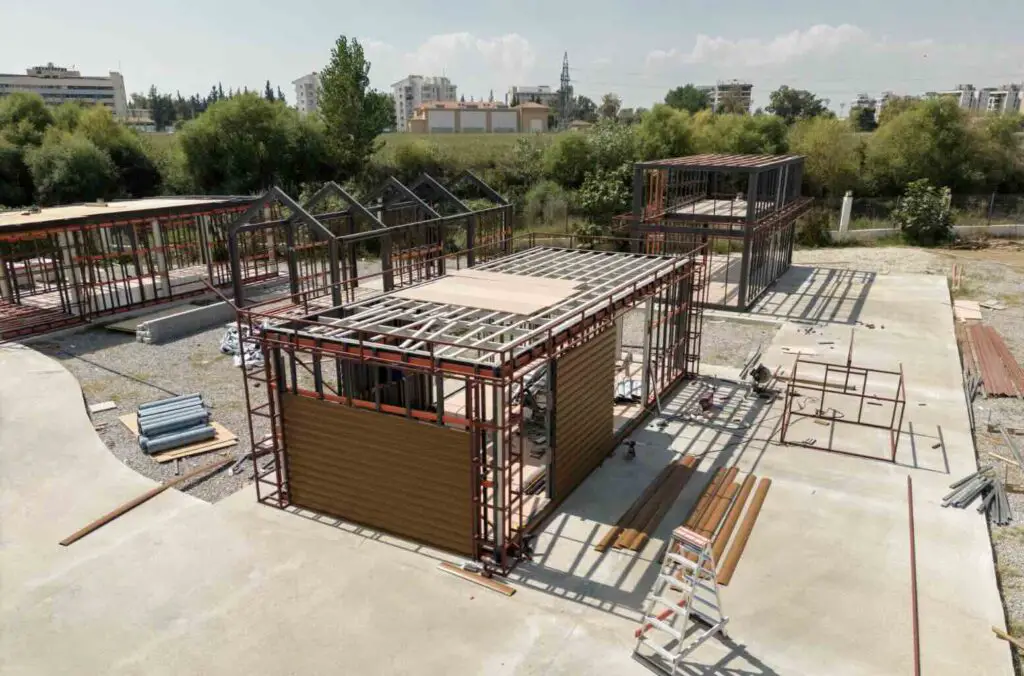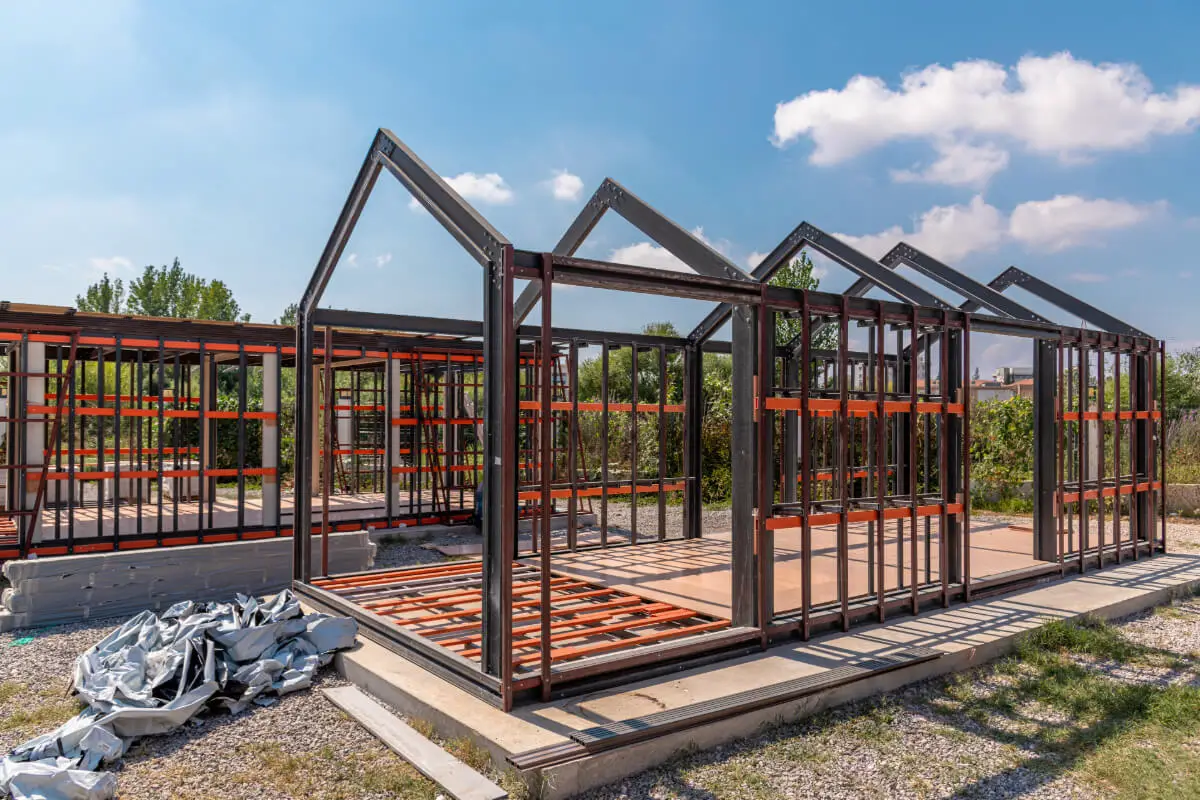With growing interest in minimalistic living and environmental consciousness, the rise of prefabricated tiny houses has marked a significant shift in contemporary housing culture. These innovative dwellings are not just symbols of a counter-cultural movement; they are fast becoming a beacon of hope for those seeking affordable, sustainable, and unique housing options.
This review seeks to explore the multi-faceted world of prefabricated tiny houses, considering the factors that have led to their popularity, design, and customization options, cost considerations, legal aspects, and the lifestyle they offer. By profoundly understanding each aspect, potential homeowners can make informed decisions about embracing this alternative mode of living.
Table of Contents
- The Rise of Prefabricated Tiny Houses
- Design and Customization Options
- Cost and Construction Time of Prefabricated Tiny Houses
- Legalities and Regulations Around Prefabricated Tiny Houses
- Living in a Prefabricated Tiny House
- Related Question
The Rise of Prefabricated Tiny Houses
The Ins and Outs of Prefabricated Tiny Houses
Home is where the heart is, they say. And many individuals ‘ hearts are beating for prefabricated tiny houses. While they may seem too small to some, these homes offer numerous advantages and have gained popularity like wildfire.
Ease and Efficiency in Building
Arguably, the leading reason for the upsurge in popularity is the ease and efficiency of building. The components of prefabricated houses are crafted in a manufacturing facility and then shipped to the site for assembly. That’s like building with LEGO bricks but on a bigger scale! Besides, such houses often come in kits, with all the necessary components included, saving the hassle of hunting down all you need for a traditional house.
Cost-Effectiveness
Perhaps the second most significant appeal of prefabricated tiny homes is the cost. Prefabrication eliminates many overhead costs that balloon the budget in traditional home construction. The saved money can be redirected into premium materials or appliances or stashed away for a rainy day, making these homes an attractively economical option.
Sustainability and Minimalism
Living in prefabricated tiny houses is now synonymous with sustainable and minimalist living. As ecological concern rises, these small abodes serve as an aesthetically pleasant answer to reducing carbon footprint, utilizing resources more efficiently, and even scaling down the clutter that comes with a bigger living space.
Customization and Personality
Who said tiny homes have to be boring or similar? The beauty of prefabricated tiny houses is in their scope for customization. You could opt for a classic look, embrace a modern facade, or let your imagination run wild with unique designs. The result is a personalized tiny home you can proudly call your own.
Mobility
Last, but not least, many prefabricated tiny houses also come with mobile options. Yes, you read that right! These comfortable abodes can be attached to wheels, opening up possibilities of a wandering lifestyle and ensuring that ‘home’ can be wherever you park it.
Prefabricated tiny houses are turning heads for all the right reasons – ease and efficiency, cost, sustainability, customization, and mobility. So now you know why more people are choosing to go ‘small’ and are clear about it. Tiny houses, tiny bills, but undoubtedly, giant satisfaction! They say less is more, and it seems that this might be the case after all in the arena of home living.

Design and Customization Options
Prefabricated tiny houses have taken the world by storm. They’re the perfect marriage between comfort, functionality, and sustainability – all wrapped in a compact housing package. Diving past the primary benefits, let’s delve into the variety of design and customization options available for these miniature living marvels.
Playing around with different architectural styles is the first step in the customization journey. Have you ever dreamed of a tiny Alpine chalet or been enchanted with the rustic charm of a log cabin? Or maybe a modern and sleek design sets your heart racing? Prefabricated tiny homes can be crafted to emulate your architectural ambition, regardless of the style.
The second customization layer comes with the floor plan. The size and layout of your tiny house can be adjusted to your lifestyle needs. Prefabricated solutions range from minimalist studio designs with intelligent foldable fittings to more traditional home layouts with separate rooms. Some companies even offer split-level designs for those who crave extra space and separation.
Material choice is yet another avenue for customization. You can shape the look and feel of your tiny home with materials that resonate with you – be it sustainable bamboo flooring, reclaimed wood panels, or modern metal cladding. The variety is boundless.
Ever thought about a rooftop terrace? Or a convertible porch? With prefabricated tiny houses, almost any feature you can dream up is possible. Add skylights for abundant natural light, implement large glass doors for an uninterrupted view of your surroundings, or design a nearly spacious enough loft for storage or sleeping.
Then, there’s the facet of comfort and convenience. Modern tiny homes can be outfitted with all the home technology you’re accustomed to – air conditioning, heating, a full-sized fridge, or even a dishwasher for those who despise doing the dishes. Some people have even created space for a washing machine!
Let us not forget about the importance of color. With prefabricated tiny homes, your palette is limitless. From minimalistic white and earthy tones to bold patterns and colors, you can imprint your unique personality on your tiny home through your choice of color.
So, whether it is about the exterior aesthetic, functional interior layout, or tiny house fitting, prefab tiny homes’ versatility ensures every piece reflects your taste and lifestyle. You become the architect of your dream home – small in size but immense in possibilities. The world of tiny home customization is as enormous as your imagination and as unique as yours.
Cost and Construction Time of Prefabricated Tiny Houses
Diving deeper into the world of prefab tiny houses, many options unfurl before those craftsmen and enthusiasts who endeavor to create their infallible abodes. The game-changing truth about prefab structures lies not only in their convenience and affordability but also in the immense scope for customization.
Each prefab tiny house comes with a unique architectural style. Gone are the days when “prefab” equated to monotonous, box-like structures. Today, the variety of prefab homes is extensive.
It ranges from compact cabins and sleek modernist designs to charming cottages, echoing the grace of traditional homes. Enterprising home builders can mix and match styles, creating unique hybrid designs brimming with character.
Every conceivable corner of a tiny prefab house can be customized. This liberty extends from the floor plans to the selection of materials. You can opt for a simple one-room layout or complex multi-level designs incorporating lofts, staircases, or hidden storage areas.
Every nook and cranny can be sculpted as per your needs. Similarly, material choices are aplenty. Options span from cost-effective vinyl siding and naturalistic wood to robust metals. The choice could be based on cost, environmental impact, or pure visual appeal.
Tiny doesn’t imply a lack of features. Prefab tiny houses are packed with possibilities; how about a rooftop terrace with a stunning view or a porch that can convert into an additional living space? These homes can be designed with comfort and convenience in mind, to an extent surprising for their tiny footprint.
Colors and aesthetics are critical in making a house feel like home. Prefab tiny houses offer a wealth of color options – bold and bright for those who love a pop of color or subtle and sophisticated for a more muted palette. Express yourself through your exterior paint colors and the aesthetic presentation of your tiny dwelling.
Interior layout customization is a fun and exciting aspect of designing a prefab tiny house. Whether it’s a foldable dining table, a convertible bed couch, or a full-sized bathtub – you can incorporate elements based on your individual lifestyle needs.
Not to forget, fittings and appliances are essential aspects ensuring comfortable living. Prefab tiny homes aren’t short here, either. Options abound, from energy-efficient appliances and smart-tech automation to space-saving fixtures, enabling a comfortable and sustainable lifestyle.
Prefab tiny homes genuinely exemplify the essence of versatility and variety. The possibilities are almost unlimited and only constrained by your creativity. With careful planning and thoughtful design, each prefab tiny home can be a personalized, efficient, and comfortable space while ensuring affordability and sustainability.
Get set and dive headlong into the adventure of designing and building a tiny prefab home that’s uniquely you.

Legalities and Regulations Around Prefabricated Tiny Houses
Prefabricated Tiny Houses: Important Legal Considerations
Choosing a prefabricated tiny house involves consideration of many design and style factors – from selecting the perfect architectural style and floor plan all the way down to picking out the suitable color options for exterior and interior design. However, there are also crucial legal considerations to be aware of when owning a tiny house.
Zoning Regulations
These are rules set by local governments that dictate where certain types of buildings or homes can be located. Tiny houses can be tricky in this regard because different counties, cities, or towns have different views of them. Some may welcome them with open arms, while others may classify them as “non-standard” or illegal. So, it’s essential to thoroughly research the zoning laws in your desired location before moving ahead with a tiny home purchase.
Building Codes
Building codes are standards for the design and construction of buildings. These codes are in place to make sure that buildings are safe and healthy for the people living in them. While prefabricated tiny homes are built in a factory and not on-site, they still must meet the appropriate building code criteria. Always double-check with the local municipality or county to ensure your chosen home is compliant.
Insurance Requirements
Insuring a prefabricated tiny home can sometimes be challenging due to its non-standard nature. Traditional homeowners insurance may not cover them, meaning you may need to seek out a specialist insurance provider. Also, check if the insurance policy covers transportation if your home is designed to be mobile.
Financing Issues
Many financial institutions still consider tiny homes to be a risky investment. As a result, securing a loan or mortgage for them can be more difficult than traditional homes. Additionally, the bank may require the tiny home to meet specific construction and safety standards for it to be considered a worthy investment.
Land Ownership
It is owning the land that your tiny home is on fixes many zoning and building code violations. It also allows for more customization and eliminates mobility restrictions. However, it may also subject you to property taxes.
License and Permit
Some tiny homes on wheels may need to be registered as recreational vehicles (RVs). Review local RV laws and regulations if your tiny house falls into this category. Additionally, some areas may require permits for the installation of utilities or for any modifications you make to the prefab home.
Awareness of these legal considerations when deciding to own a prefabricated tiny house will help you clear any potential legal roadblocks. Remember, laws and regulations can change from place to place and over time. So stay up to your local guidelines and regulations to make your tiny house living experience hassle-free.

Living in a Prefabricated Tiny House
Issues
Living in a prefabricated tiny house means becoming part of an innovative trend rthat’sng conventional notions of home and living. But this lifestyle goes beyond the physicality of the closet-sized kitchen and lofted bed. It’s a sIt’s to a simpler life, just as much defined by what’s what’s what’s seen.
Navigating the world of zoning regulations for tiny houses is one of those unseen challenges. This can be not very easy, given that these vary from town to town, county to county. Understanding what’s in your area, be it a backyard, RV park, or tiny house community, is critical in avoiding potential legal mishaps.
Likewise, adhering to building codes helps ensure the safety of the tiny home. Codes typically dictate certain design features such as ceiling heights, means of escape, and stair dimensions. Since prefabricated tiny homes have particularities, getting them to meet these codes can require creative problem-solving.
With miniature living spaces, insurance requirements can be a bit of a gray area. Standard homeowners typically do not cover tiny houses. Thus, finding the right coverage can involve exploring options like RV insurance, builder’builder’ssurance, or specialized tiny house insurance.
Financing issues, while not unique to tiny house living, do possess its distinct set of challenges. Most traditional mortgage lenders may not approve loans for tiny homes. Options include personal loans, RV loans, or peer-to-peer lending. Having a solid financial plan can make the transition to living smoothly.
Land ownership can be another sticky point as tiny house dwellers figure out where to park their mini-abode. To simplify the process, some have turned to nifty solutions like subdividing land with family or friends, renting or leasing a suitable piece of land, or living in tiny house–friendly communities.
Lastly, specific licenses and permits may be needed depending on where the tiny house will be located or how it will be used. These could range from permits for auxiliary units to RV licenses.
In essence, the tiny house lifestyle is about more than just downsizing. It’s about navigating and overcoming the challenges that come with this kind of lifestyle choice. It’s about enjoying the journey as much as the destination and relishing the freedom, flexibility, and simplicity of tiny living. It’s about shaping a life that suits your needs and desires, not being confined by what traditional housing dictates. It’s a day experience living in a prefabricated tiny house.
As with any hobby that evolves into a lifestyle, passion, patience, and perseverance are prerequisites. Keep these in mind as dreams of tiny house living take shape, and soon, those dreams can become a pint-sized reality.

Cutting across traditional housing concepts, prefabricated tiny houses have genuinely redefined what making a space a home means. They stand as testaments to how human ingenuity and ecological mindfulness can coincide perfectly, offering solutions to contemporary living challenges.
This is aIt becomes abundantly clear by exploring their design flexibility, cost-effectiveness, and lifestyle implications. However, like most choices, owning and living in such a dwelling comes with challenges and legal parameters to navigate.
Yet, for those willing to stride the path less trodden, the rewards of owning a prefabricated tiny house – a reflection of their values and personality- may outweigh the potential drawbacks.
Real Estate Crunch gives you real property and real estate information and advice. We offer a free monthly newsletter; you can sign up for our newsletter by clicking here.
We also have a weekly podcast called “Real Estate Crunch” on all major podcast platforms. Listen to our podcast by clicking here.
Follow us on our social media platforms – Facebook and Instagram.
Related Question
Faster, Cheaper, And More Efficient: Benefits Of Prefab Homes
Prefab homes are the new way of building houses and other buildings. Pre Fab homes are built entirely or partly off-site, assembled, and placed on the foundation. This has many advantages to building houses with more advanced technologies and materials. This means homes can usually be built quicker and cheaper than a standard-built home.
By clicking here, you can read more about Faster, Cheaper, And More Efficient: Benefits Of Prefab Homes.
Prefab Vs. Modular Homes Explained
Prefab housing is prefabricated housing built in a factory-controlled setting and assembled on-site. Modular homes are also made in a factory study and assembled on-site, except modular homes usually refer to homes where more complete sections are built on-site.
By clicking here, you can read more about Prefab Vs. Modular Homes Explained.
Prefab Homes Delivered & Setup: Modern Solution For Housing
Prefab homes are built in factories using standardized components; these homes are delivered to the buyer’s desired location either fully or partially finished, ready for quick assembly onsite. With companies offering delivery and setup services, the process has become even more streamlined, eliminating the need for costly tradespeople and reducing wait times.
By clicking here, you can read more about Prefab Homes Delivered & Setup: Modern Solution For Housing.


